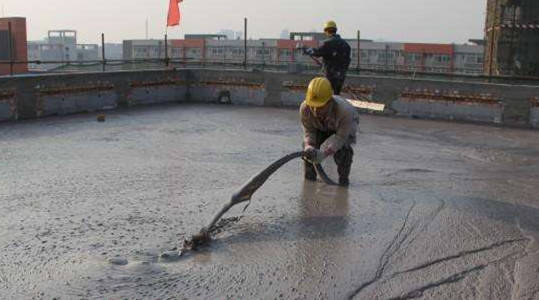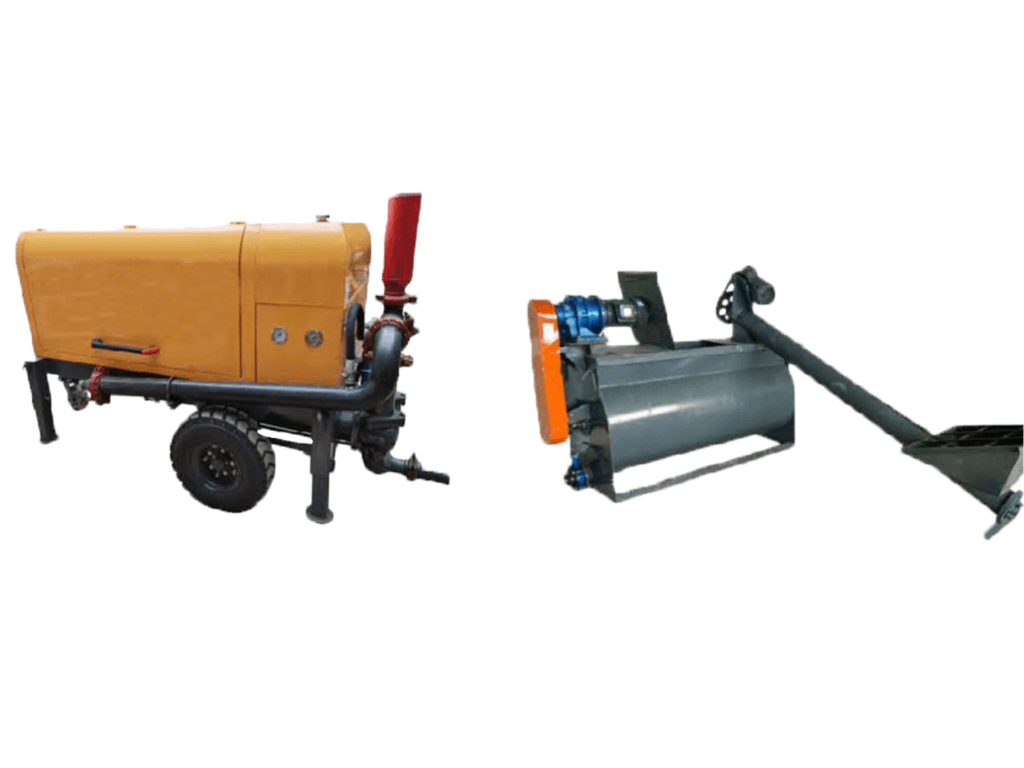Professional solutions on concrete addtives, Concrete Foaming Agent, Superplasticizer, CLC Blocks Additives, and foaming machine
(Aerated lightweight concrete is unlike conventional concrete in some mix materials)
What is Cellular lightweight concrete
The compressive strength of CLWC for a given density is higher, having a high content of fly ash in the mix. It also contributes to strength enhancement by minimizing the volume of pores and uniformly distributed in the mix. Water absorption is high for high compressive strength because, for a given CLWC mix, increased density corresponds to an increase in the paste volume of the capillary pore at the same reduction in the foam volume of the artificial pore. The compressive strength of foamed concrete is mainly a function of dry density and is only slightly affected by the percentage of cement replaced by silica fume. A large proportion of silica fume did not significantly affect the long-term compressive strength. The compressive strength of foam concrete with silica fume is higher than that of foam concrete without silica fume, and the difference in strength between foam concrete with silica and control samples is approximately the same for all ages. K. Krishna Bhavani Siram(2012) carried out his research on Cellular Lightweight Concrete Blocks as a Replacement of Burnt Clay Bricks. The major issues in environmental improvement involve improving the combustion efficiency of existing kilns and upgrading kilns to newer and more efficient process designs. Her study has shown that the use of fly ash in foamed concrete can greatly improve its properties. Most of the cleaner production effort is required in India. Hence, Cellular Lightweight Concrete blocks may be used as a replacement for burnt clay bricks for construction purposes, which is advantageous in terms of general construction properties as well as eco-friendliness. Concluded that Foams formed from protein-based surfactants have smaller bubble sizes, are more stable, and have a stronger closed bubble structure compared to the foam produced using synthetic surfactants. Hence, they are high-strength foam concretes. The density of foam concrete is the function of the volume of foam that is added to the cement paste. The compressive strength of foamed concrete is an inverse function of the density of the material.
The foamed concrete with denser microstructure and thicker walls
M. Roderick Jones et al. (2013) investigated that instability increased with reducing foamed concrete density. Stability can be maintained by using a fast setting time and fine particle size cement to produce stable foamed concrete at ultra-low densities. The initial setting time of not more than 25 minutes always resulted in stable foamed concrete with densities down to 150 kg/m³. And time below it, mix set more quickly for practical purposes. Fine fly ash gave stable foamed concrete at ultra-low density compared to coarser fly ash; even the setting time was the same. Also, improves the insulating nature of foamed concrete because it reduces the heat of hydration significantly. For a density of 300 kg/m³, foamed concrete with 30% fly ash absorbs up to 25% more sound compared to foamed concrete having no-fly ash. 30% fine fly ash contained in foamed concrete reduced the thermal conductivity by around 7%, whereas it is just 4% with coarser fly ash for densities of 200 and 300 kg/m³. The difference is due to higher fineness, which improves the bubble structure and yields more closed bubbles. Thermal conductivity increases when fly ash contained is 70% or more. Fly ash also improves the microstructure of foamed concrete after long-term curing. Fly ash of more than 50% yields foamed concrete with denser microstructure and thicker walls. Focused on the thermal conductivity of foamed OPS concrete of density in the range of 1100-1600 kg/m³ and investigated that the thermal conductivity of concrete increases with higher density. The lowest thermal conductivity was found for a density of 1100 kg/m³, which is similar to lightweight concrete with expanded perlite aggregate. Thermal conductivity and compressive strength of density 1500 and 1600 kg/m³ verify the RILEM classification. They can be used as structural and insulating concrete in which tiny air voids introduced due to foam act as an insulator. In low-density foamed concrete, more foam is introduced, resulting in a high amount of air voids in concrete, which is a good insulator. The thermal conductivity of foam concrete is lower than that of conventional blocks and bricks.
Aerated lightweight concrete is unlike conventional concrete in some mix materials
Aerated lightweight concrete does not contain coarse aggregate, and it possesses many benefits such as low density with higher strength compared with conventional concrete, enhanced thermal and sound insulation, and reduced dead load, which could result in several advantages in decreased structural elements and reduced transferred load to the foundations and bearing capacity. Foamed concrete is different in the agent of forming air voids as compared with AAC. Foam agents form the air voids in foamed concrete; this operation is physical processing. Against the air voids in AAC formed by the addition of aluminum powder to the other materials and the reaction between them, this operation is chemical processing. The air voids are homogenous and distributed within aerated lightweight concrete. Aerated lightweight concrete is considered the economy in materials and consumption of by-products and waste materials such as fly ash. P. S. Bhandari et al. (2014) carried out research on CLWC in terms of density and compressive strength and concluded that compressive strength for CLWC is low for lower-density mixtures. The compressive strength of 53-grade cement is slightly higher than 43-grade cement, but as strength increases, its density also increases. CLWC is acceptable for framed structure. CLWC can be suitable for earthquake areas.
Price of Cellular lightweight concrete
Cellular lightweight concrete particle size and purity will affect the product's Price, and the purchase volume can also affect the cost of Cellular lightweight concrete. A large amount of large amount will be lower. The Price of Cellular lightweight concrete is on our company's official website.
Cellular lightweight concrete supplier
If you are looking for high-quality Cellular lightweight concrete, please feel free to contact us and send an inquiry. (sales@cabr-concrete.com). We accept payment via Credit Card, T/T, West Union, and Paypal. TRUNNANO will ship the goods to customers overseas through FedEx, DHL, by air, or by sea.
(Aerated lightweight concrete is unlike conventional concrete in some mix materials)








